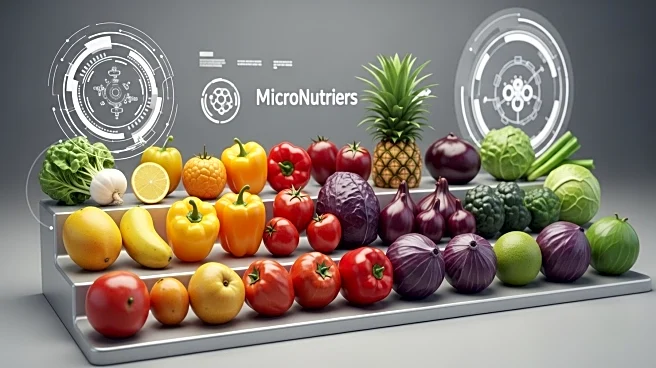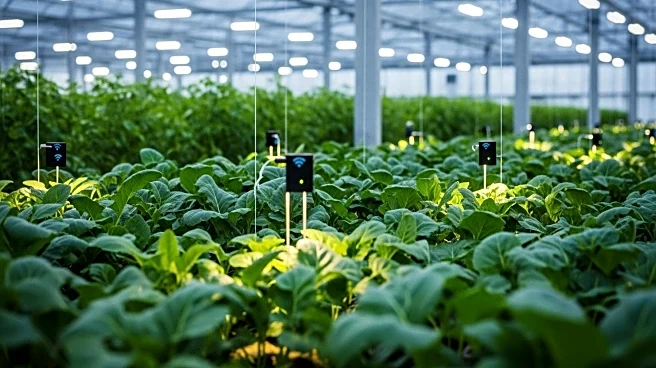What's Happening?
The Crop Micronutrients Market is projected to grow significantly from USD 8.456 billion in 2025 to USD 11.559 billion by 2030, with a compound annual growth rate of 6.45%. The market study provides a comprehensive analysis of the global crop micronutrients
market, focusing on technological advancements, competitive strategies, and market dynamics. Key developments include innovations in chelation technology and precision application methods, which are enhancing nutrient uptake and reducing environmental footprints. The study categorizes micronutrients by type, crop type, form, and geography, offering insights into market trends and growth opportunities across diverse regions and applications.
Why It's Important?
The growth of the Crop Micronutrients Market is crucial for addressing the increasing demand for high-yield, nutrient-rich crops, driven by the rising global population and the need for sustainable agriculture. Technological advancements in chelation and precision application methods are pivotal for improving agricultural productivity and environmental sustainability. Stakeholders, including major players like BASF SE and Yara International ASA, are leveraging strategic partnerships and innovations to enhance nutrient delivery for precision agriculture, positioning themselves strongly in high-growth markets such as Asia Pacific. This market evolution is essential for optimizing strategies in the agricultural sector.
What's Next?
The study suggests that stakeholders should focus on strategic recommendations to capitalize on emerging trends and mitigate challenges. As precision agriculture adoption increases, opportunities for growth in the micronutrients market are expected to expand. The competitive environment analysis indicates that major players will continue to advance their portfolios through mergers, acquisitions, and collaborations, further shaping the market landscape. The study also highlights the importance of understanding regional trends, such as Asia Pacific's rapid market growth and North America's focus on sustainable farming practices.
Beyond the Headlines
The technological advancements in the crop micronutrients market not only improve agricultural productivity but also contribute to environmental sustainability by reducing the ecological footprint of farming practices. The emphasis on chelated micronutrients, known for higher bioavailability, reflects a shift towards more efficient and sustainable agricultural systems. This evolution in farming practices could lead to long-term benefits for food security and environmental conservation.













